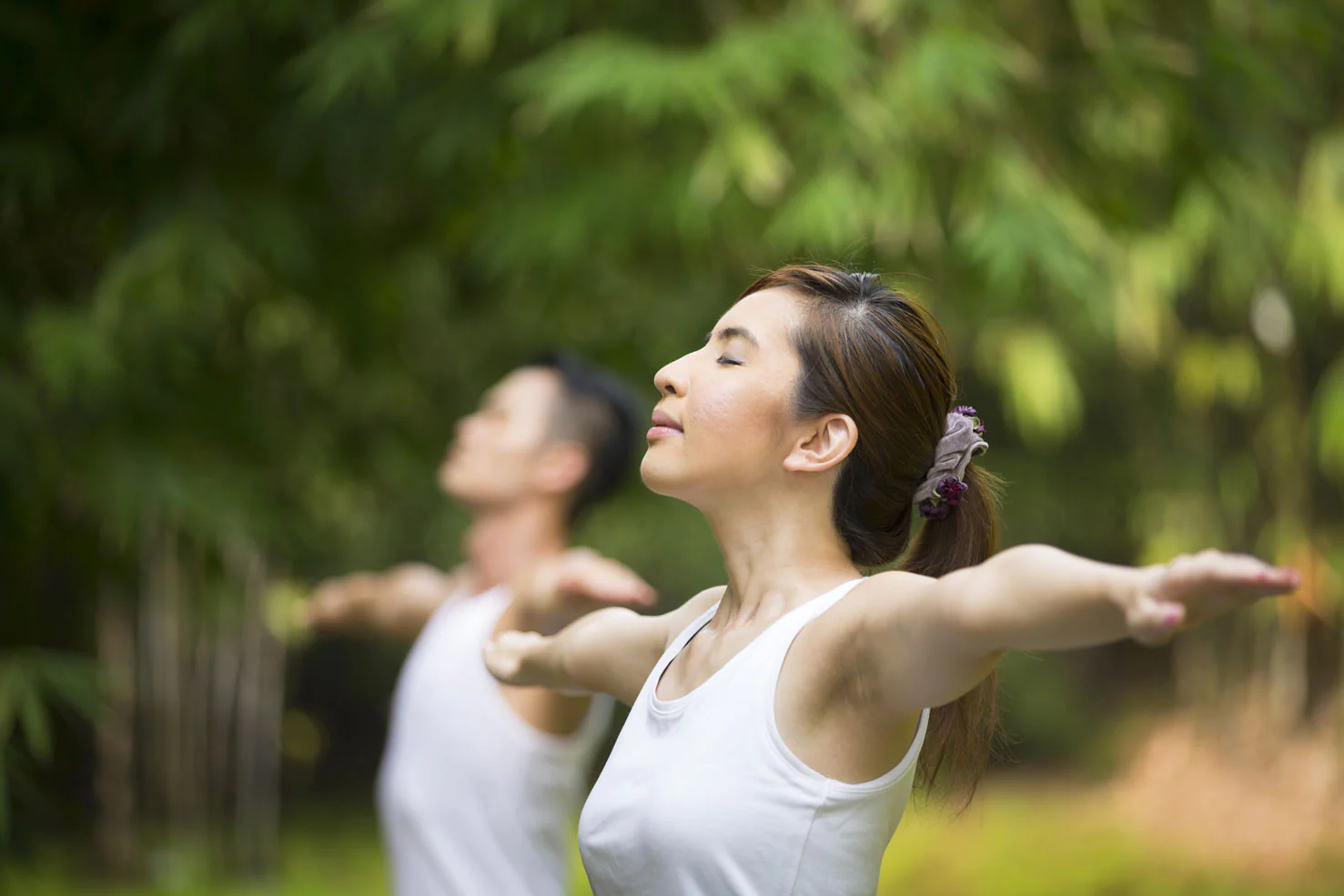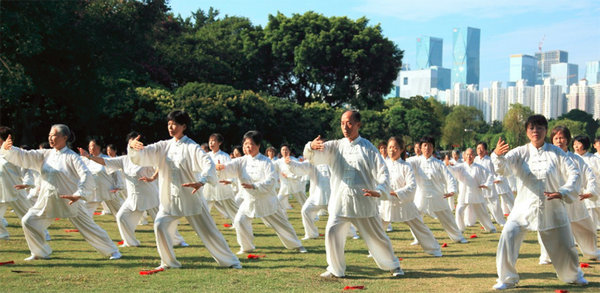Tai Chi, with its graceful movements and meditative essence, has captivated practitioners around the world for centuries. Originating in ancient China, this martial art has evolved from a self-defense technique into a holistic system for promoting physical and mental well-being. Let’s delve into the rich history and origins of Tai Chi, exploring its roots and evolution through the ages.

Ancient Beginnings:
The roots of Tai Chi can be traced back to ancient China, where it emerged as a martial art and form of self-defense. Legend has it that TaiChi was created by a Taoist monk named Zhang Sanfeng during the 12th century at the Wudang Mountains. Inspired by the movements of animals and nature, Zhang Sanfeng developed a series of flowing, circular movements that emphasized balance, flexibility, and internal strength.
Evolution and Development:
Over the centuries, Tai Chi underwent various transformations, blending elements of Taoist philosophy, traditional Chinese medicine, and martial arts principles. It wasn’t until the Ming and Qing dynasties (14th to 20th centuries) that TaiChi began to take shape in its modern form. During this time, Tai Chi masters such as Chen Wangting and Yang Luchan refined and codified the practice, creating different styles and variations that emphasized specific principles and techniques.
The Five Major Styles:
Tai Chi is commonly practiced in five major styles, each with its unique characteristics and lineage:
- Chen Style: Considered the oldest and original style of TaiChi, characterized by explosive movements and dynamic changes in speed.
- Yang Style: Developed by Yang Luchan, known for its slow, gentle movements and emphasis on relaxation and balance.
- Wu (Hao) Style: Created by Wu Yuxiang, distinguished by compact and precise movements, with an emphasis on internal energy (qi) cultivation.
- Style: Founded by Wu Quanyou and further developed by his son Wu Jianquan, known for its small and compact movements, suitable for practitioners of all ages.
- Sun Style: Created by Sun Lutang, incorporates elements of Tai Chi, Xingyi, and Bagua, characterized by lively footwork and agile movements.

Spread and Globalization:
In the early 20th century, Tai Chi gained popularity beyond China’s borders, thanks to the efforts of master practitioners who traveled and taught abroad. During the Cultural Revolution in China, TaiChi was suppressed along with other traditional practices but experienced a resurgence in the late 20th century as interest in traditional Chinese culture grew worldwide.
Today, TaiChi is practiced by millions of people around the globe, valued for its numerous health benefits, including improved balance, flexibility, strength, and mental relaxation. It has also gained recognition as a complementary therapy for various health conditions, such as arthritis, hypertension, and stress-related disorders.
Tai Chi’s origins are deeply rooted in ancient Chinese philosophy and martial arts traditions, evolving over centuries into a holistic practice that promotes physical, mental, and spiritual well-being. Whether practiced for health, meditation, or self-defense, Tai Chi continues to inspire and enrich the lives of countless individuals worldwide, embodying the timeless wisdom of ancient China.
The Pros and Cons of Tai Chi: Exploring the Benefits and Drawbacks
Tai Chi, often referred to as “moving meditation,” has gained popularity worldwide for its gentle, flowing movements and numerous health benefits. While Tai Chi offers many advantages for fiatogel physical and mental well-being, it also has its limitations and potential drawbacks. Let’s delve into the pros and cons of TaiChi to gain a better understanding of this ancient practice.

The Benefits of Tai Chi:
- Improves Balance and Stability: Tai Chi incorporates slow, deliberate movements that promote balance, coordination, and proprioception, making it an excellent exercise for reducing the risk of falls, particularly in older adults.
- Enhances Flexibility and Range of Motion: The gentle stretches and flowing motions of Tai Chi help to improve flexibility and joint mobility, reducing stiffness and discomfort in muscles and joints.
- Strengthens Muscles and Bones: While TaiChi is low-impact, its weight-shifting and weight-bearing movements can help strengthen muscles, bones, and connective tissues, promoting overall physical strength and resilience.
- Reduces Stress and Anxiety: Tai Chi emphasizes relaxation, deep breathing, and mindfulness, promoting a state of calm and mental clarity that can help reduce stress, anxiety, and symptoms of depression.
- Boosts Cardiovascular Health: Despite its gentle nature, Tai Chi can provide a moderate cardiovascular workout, improving heart health, circulation, and aerobic endurance over time.
- Supports Mental Well-Being: Regular practice of TaiChi has been associated with improved cognitive function, memory, and concentration, as well as a greater sense of emotional well-being and resilience.
- Accessible to All Fitness Levels: TaiChi is suitable for people of all ages and fitness levels, making it an inclusive and adaptable exercise option for individuals with diverse health conditions and physical abilities.
The Drawbacks of Tai Chi:
- Slow Progression: While Taichi offers numerous benefits, progress may be slow and gradual, requiring consistent practice over an extended period to see significant improvements in strength, flexibility, and balance.
- Limited Intensity: Tai Chi is a low-impact exercise, which may not provide sufficient intensity for individuals seeking high-intensity aerobic or strength training workouts.
- Risk of Injury: While Tai Chi is generally safe for most people, improper technique or overexertion can lead to muscle strains, joint injuries, or falls, particularly in beginners or those with pre-existing health conditions.
- Requires Instruction: Learning TaiChi correctly requires proper instruction from a qualified teacher or master, as self-guided practice may result in ineffective or potentially harmful movements.
- Time and Commitment: Like any skill-based practice, mastering Tai Chi requires time, patience, and dedication, which may be challenging for individuals with busy schedules or limited availability.
- Not a Quick Fix: While TaiChi offers many health benefits, it is not a quick-fix solution and may not provide immediate relief for certain health conditions or symptoms.
Conclusion:
Tai Chi offers a wide range of physical, mental, and emotional benefits, making it a valuable addition to a holistic approach to health and wellness. However, it’s essential to recognize that TaiChi is not without its limitations and may not be suitable for everyone. By understanding the pros and cons of TaiChi, individuals can make informed decisions about whether this ancient practice aligns with their health and fitness goals.
Read More Article About “Malang Smart Arena: Integrasi Teknologi untuk Peningkatan Pengalaman Penonton“

